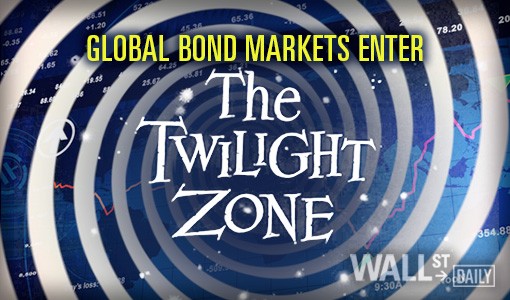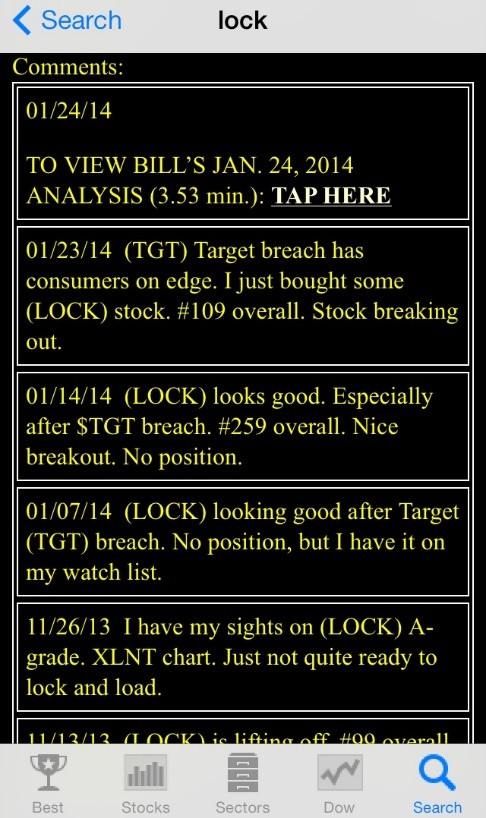Revamping Your Bond Portfolio With A Simple Momentum Strategy SPDR Barclays Capital High Yield
Post on: 17 Апрель, 2015 No Comment

Bond investors have to feel like they are between a rock and a hard place. Investors, fearing the uncertainty of slowing global economic growth and the potential for a sovereign debt-led financial crisis in Europe, have flocked to relatively high-quality Treasury bonds, pushing yields down to near all-time lows. These low yields have pushed other investors out the credit curve, driving down the yields on speculative grade corporate bonds to historic lows. The upside on a five-year U.S. Treasury is a measly 3.2 points (i.e. if the yield on a par coupon five-year Treasury went all the way to zero, the bond price would rise from $100 to $103.2 ). This does not seem to be good risk/reward for the obligations of a government that just registered its fourth trillion-dollar deficit. However, with absolute yields on junk credit at historic lows, investors are getting paid less to lend money to highly levered corporations in an economic environment that remains fragile.
The Rock: 5-yr UST — Trailing 50 Years
The Hard Place: Barclays Capital High Yield Corporate Index
For investors whose station in life demands the consistent coupon and lower volatility afforded by fixed income investments, the choice set is challenging. Drawing on my previous articles on momentum strategies (I. II. III ), I have derived a possible solution. The strategy invests in either U.S. Treasuries or high yield corporate bonds depending on which class of bonds performed best in the last month, and holds these bonds for one additional month. Investors could readily implement this strategy by switching between a high-yield ETF, such as, SPDR Barclays Capital High Yield Bond ETF (NYSEARCA:JNK ), and a Treasury index like iShares Barclays U.S. Treasury Bond Fund (NYSEARCA:GOVT ). Utilizing historical returns of the underlying bond indices, this switching strategy over the last 30 years has produced market-beating returns with risk more closely resembling an investment-grade bond return profile than a speculative grade bond return profile. (For all of you dataheads, the historical returns are appended at the conclusion of the article.)
The resultant return profile from this momentum strategy produced an average return 173 basis points better than the high-yield index with roughly three-quarters of the variability of returns of that index. The outperformance of the momentum strategy over the high yield index was roughly equivalent to the outperformance of the high yield index relative to Treasuries.
I nvestors should not expect the same 11.7% annualized return experienced over the last 30 years from this strategy. The Volcker-led disinflation of the early 1980s through the rallying yield curve during the current global financial crisis has led to dramatically lower interest rates and a generation-long boon for bonds. However, just a repeat of the 173 basis point outperformance of the momentum strategy over the high yield index would lead to approximately an 8.5% annualized return, which would be a very attractive fixed income return in this macroeconomic environment.
A time series of the compounded returns from the Treasury bond index, the high yield bond index, and the momentum strategy are shown below to demonstrate the tremendous outperformance of this strategy historically.
The alpha-generative process that drives the risk-adjusted outperformance of this strategy can be seen during the calamitous late 2008 market. The high-yield market dramatically underperformed while U.S. Treasury bonds rallied as a flight-to-quality instrument. This switching strategy invested in Treasury bonds from June to December 2008, missing the Lehman Brothers-led swoon in prices in September and October of that year. The strategy then was invested in high-yield bonds for the last eight months of 2009 as the high yield bond market rebounded dramatically.
The low correlation between Treasury bonds and high-yield bonds (correlation coefficient of 0.05 for these two indices over the sample period) has provided diversification that lowered the riskiness of the return profile. While fixed income returns will be necessarily lower over the next 30 years since coupons are lower after the decades-long rally, this switching strategy may still have merit. An upside surprise to economic growth that spurs inflation concerns may hurt the performance of Treasury bonds as investors push down prices to seek compensation for rising inflation and other investors rotate out of the flight-to-quality instrument. This bullish case will drive performance in high-yield bonds as higher economic growth enables these highly levered companies to improve their financial standing. A downturn in economic growth or an escalating financial crisis in Europe will continue to drive positive returns for Treasury securities, potentially at the expense of high-yield corporate bonds.

T hese scenarios demonstrate why correlations between these two fixed income asset classes should remain muted. Momentum strategies have been shown to work across asset classes, market environments, and geographies over time because markets tend to under-react to new information. Hopefully, this strategy can help Seeking Alpha’s fixed income investors get out from between a rock and a hard place.
Historical Data
Disclosure: I have no positions in any stocks mentioned, and no plans to initiate any positions within the next 72 hours. I wrote this article myself, and it expresses my own opinions. I am not receiving compensation for it (other than from Seeking Alpha). I have no business relationship with any company whose stock is mentioned in this article.
Conduct in-depth research on JNK and 1,600+ other ETFs with SA’s ETF Hub














